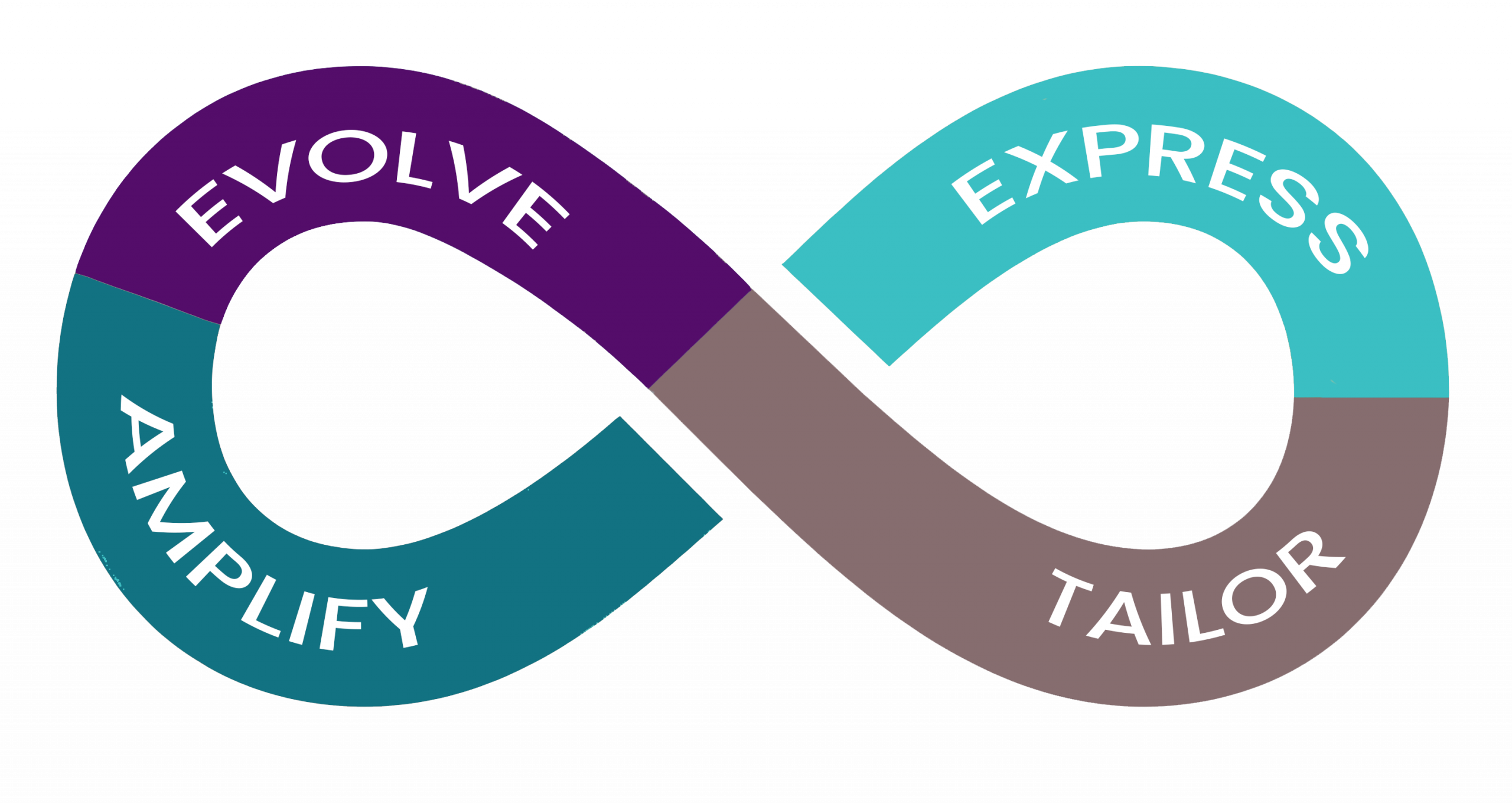The Loop: Why Modern Marketing Needs It—and Why RevOps Is Where It Wins
September 29, 2025
Optimize using the Loop—where each cycle performs a little better than the last.
Buyers changed; your operating model should too. People now arrive pre-briefed by AI tools (ChatGPT, Perplexity, Gemini), skimming summaries and screenshots before they ever talk to you. Campaigns that once produced steady results decay faster, and “publish → click → convert” isn’t dependable on its own.
HubSpot’s Loop is a simple answer: a four-step operating rhythm—Express → Tailor → Amplify → Evolve—that gets smarter every cycle. Marketers love it because it clarifies what to make and where to show up. RevOps loves it because it ties the work to attribution, lifecycle, and velocity. Run it weekly, keep it lightweight, and point it at revenue.
Part 1: The Loop for Marketing (what to make, where to show up)
1) Express — say who you are (clearly enough for humans and AI)
-
What it is: Codify brand voice, POV, ICP, offers, proof points, and compliance guardrails so every asset—and every AI-assisted draft—stays on-brand.
-
Make it real: Create a one-page brand sheet, a prompt pack (headline, angle, CTA), and a claim-proof library. This becomes the source of truth for writers, designers, and AI tools.
2) Tailor — make relevance the default
-
What it is: Use your CRM to personalize by role, industry, and intent. Relevance comes from data, not guesswork.
-
Make it real: Build a few high-quality segments (e.g., “Finance leaders at mid-market SaaS who viewed pricing”) and set conditional copy/CTAs for each.
3) Amplify — show up where buyers already are
-
What it is: Distribute across the channels your buyers actually use—email, social, events, communities—and make content answer-worthy (so AI summaries reflect you accurately).
-
Make it real: Tie all assets to a single campaign with UTMs. Add Q&A sections to cornerstone pages, publish short expert takes on social, and instrument everything.
4) Evolve — iterate weekly, not quarterly
-
What it is: Review performance, pick one improvement, and roll it back into Express/Tailor/Amplify. Over time, your voice sharpens, segments improve, and the channel mix evolves.
-
Make it real: Keep a tiny change log (“what we shipped, what we learned, what we’ll change”). The habit matters more than the tool.
Marketing takeaway: The Loop is a cadence, not a project. It prioritizes clarity (Express), relevance (Tailor), presence (Amplify), and speed of learning (Evolve).
Part 2: The Loop for RevOps (where it really pays off)
Most bottlenecks are inside the CRM: unclear lifecycle gates, fuzzy credit, slow handoffs. Running the Loop with a RevOps lens turns creative output into measurable revenue impact.
Express (RevOps version): define revenue rules and credit
-
Decide: MQL/SQL gates, lifecycle entry/exit for contacts/companies, SLA timers, and a simple “everything ties to a campaign + UTMs” policy.
-
Why it matters: Without shared definitions and consistent credit, your reports won’t drive decisions.
Tailor: make the data decision-ready
-
Complete the basics: Role, industry, company size, lead status, lifecycle timestamps.
-
Segment with intent: Create 1–2 “priority segments” you can actually act on (e.g., “Decision-makers stuck between SQL and Opportunity”).
-
Why it matters: Clean fields + useful segments power better routing, sequences, and attribution.
Amplify: run one trackable play per segment
-
Pick the motion: Targeted email/sequence, event invite, win-back touch—whatever addresses this segment’s bottleneck.
-
Instrument: Associate all assets to a campaign; define a success metric like time-to-SQL or stage conversion.
-
Why it matters: One focused play tied to one segment reveals exactly what moves deals.
Evolve: improve weekly, on purpose
-
Read three tiles:
-
Attribution → revenue (multi-touch view)
-
Journey/Lifecycle (stage conversions + time between stages)
-
Deal Velocity (stage duration, time-to-close, win rate)
-
-
Choose one change: Tighten routing, adjust a sequence, tweak MQL criteria, or fix timestamps—then log the result.
RevOps takeaway: The Loop converts “marketing activity” into operational momentum—clearer credit, cleaner progression, faster deals—without touching the website.
Where Marketing and RevOps loops intersect (and why that matters)
-
Shared inputs (Express): Marketing’s message pillars + RevOps’ lifecycle/credit rules keep content on-brand and reports trustworthy.
-
Shared targets (Tailor): The same segments power both personalized messaging and precise routing.
-
Shared campaigns (Amplify): When everything is tied to a campaign, you can attribute revenue across channels and teams.
-
Shared cadence (Evolve): A 15-minute weekly readout aligns both sides on what changed and what to do next.
A 30-day, low-friction way to start
- Express: Write the one-page policy (MQL/SQL, lifecycle gates, SLAs, “tie everything to a campaign + UTMs”).
- Tailor: Fill the core fields to 90%+ completeness; create two priority segments. Baseline stage conversion, stage duration, and time-to-close.
- Amplify: Launch one trackable play for one segment; associate every asset to the campaign; define the success metric.
- Evolve: Stand up a tiny dashboard (Attribution → Journey → Velocity). Meet 15 minutes weekly, pick one change, log it, repeat.
That’s the Loop—lightweight, revenue-first, and compounding.
Common pitfalls (and how the Loop prevents them)
-
Generic AI output: Fix Express first (voice/guardrails/claims).
-
“Personalization” without data: Tailor isn’t decoration; it’s clean fields + useful segments.
-
Activity without credit: Campaign/UTM discipline or it doesn’t count.
-
Endless analysis: Evolve is a ritual—choose one change weekly and move on.
The bottom line
Marketing needs clarity, relevance, presence, and learning speed. RevOps needs attribution, lifecycle clarity, and velocity. The Loop serves both. Run it simply: define, segment, run, improve—every week. The compounding effect is where the revenue shows up.
Interested in applying the Loop to your HubSpot portal? Start with a revenue-focused audit (attribution, lifecycle, velocity) or adopt the weekly cadence with one segment and one play. Either path gets you into the loop—where each cycle performs a little better than the last. Contact me for more information.
Sources
-
CX Today. (2025, September). HubSpot Inbound 2025: The Top 10 Announcements. Retrieved from https://www.cxtoday.com/crm/hubspot-inbound-2025-the-top-10-announcements/
-
HubSpot Investor Relations. (2025, September 4). HubSpot Unveils Blueprint for Building Hybrid Human-AI Teams with 200+ Product Updates. Retrieved from https://ir.hubspot.com/news-releases/news-release-details/hubspot-unveils-blueprint-building-hybrid-human-ai-teams-200
-
Investors.com. (2025, September 4). How HubSpot Aims To Win In AI With Supercharged Human-Agent Teams. Retrieved from https://www.investors.com/news/technology/hubspot-stock-artificial-intelligence-agents-inbound-2025/


